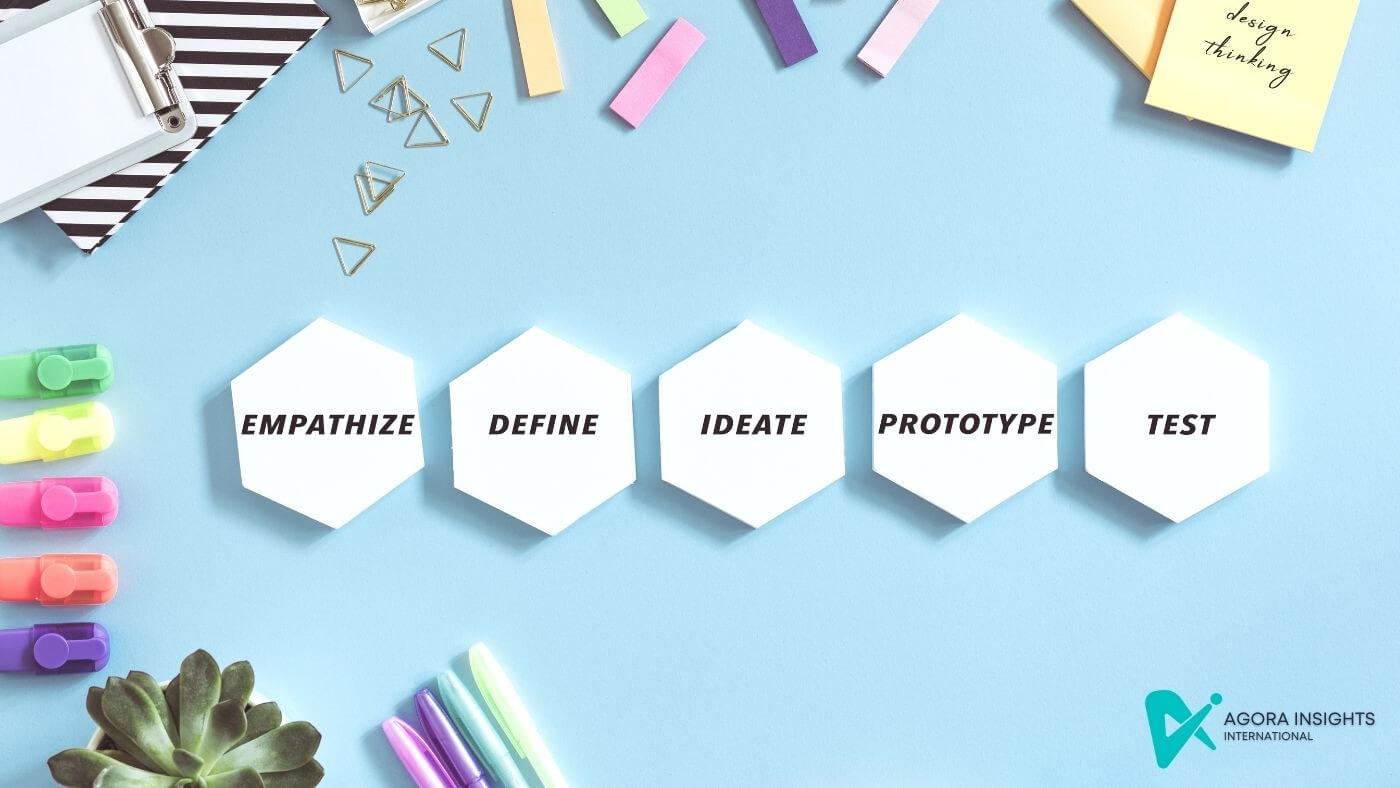For many years now, I've come to appreciate design thinking as more than something we learn; it's a mindset for problem-solving that puts human experiences at the heart of business decisions, while having a bias towards action. This mindset encourages us to see failures as stepping stones towards refinement and innovation without the fear that we have to be perfect before we start. It's not just about finding solutions; it's about learning from the process and enhancing our approach to problem-solving. Let's get started!
Design Thinking: Strategy formulation for Business Analysts and Architects
Enterprise strategic processes frequently oscillate between two extremes: over-reliance on retrospective data and high-risk decisions driven by instinct. In such cases, accurately determining future customers' needs and desires becomes difficult. However, the design thinking principles popularised by IDEO's David M. Kelley and Tim Brown, as well as the Rotman School's Roger Martin, provide a road map. Design thinking, a human-centered strategy formulation methodology, significantly improves a company's ability to understand and meet customer needs.
Tim Brown, the CEO and President of IDEO, defines design thinking as a
"human-centered approach to innovation that draws from the designer's toolkit to integrate the needs of people, the possibilities of technology, and the requirements for business success."
This process encourages a shift in focus from simply providing products or services to understanding human behaviour and developing strategic solutions.
Design Thinking's Five Steps

Iterative design thinking consists of five steps: empathise, define, ideate, prototype, and test. This approach encourages broad thinking while maintaining a focus on practical execution.
1. Empathise
The first phase entails immersing oneself in the world of the customer in order to gain a thorough understanding of their needs, motivations, and behaviours. Adopting the customer's perspective, gathering rich, qualitative data, challenging assumptions, and expanding understanding beyond the immediately observable are all important. "Design thinking is not just a skill," says IDEO's David M. Kelley, "it's a mindset... A human-centered mindset."
2. Define
After gaining a thorough understanding of the customer's world, the next step is to compile these insights and define the problem to be addressed. This stage entails developing a human-centric and actionable problem statement that will serve as a guidepost for the ideation phase.
3. Ideate
The ideation phase promotes divergent thinking, or the generation of a wide range of ideas without regard for judgement or limitations. This stage encourages creativity and free-thinking while exploring a wide range of solutions. Once a large number of ideas have been generated, the process of convergent thinking begins, which involves evaluating, refining, and selecting the most impactful ones for further investigation.
4. Prototype
The chosen concepts are turned into physical prototypes. Prototyping investigates a product's functionality and feasibility, providing a low-risk environment for identifying issues or improvements.
5. Test
Finally, the prototypes are put through rigorous testing. This stage shows the prototype to users, collects feedback, and refines the solution as needed.
The flexibility of design thinking is its strength; these stages are applied iteratively, allowing for continuous refinement until an optimal product or service is created.
A Case Study of the Effectiveness of Design Thinking
The transformation of Procter & Gamble's skincare brand, Oil of Olay, demonstrates the power of design thinking. The team started by empathising with customers and discovered a significant untapped market - women in their 30s and 40s. With these insights, they defined their problem, developed prototypes, and tested various price points and store displays. As a result, a well-received product line opened up a new market segment.
The profound implications of design thinking for both business analysts and business architects become clearer when viewed through the lens of the Procter & Gamble case study.
The role of Business Analysts using Design Thinking

Business analysts serve as the link between business issues and technological solutions. They ensure that the technology in use is well-understood and adequately addresses business needs. Business analysts can apply the five-step process to their work by using the design thinking lens.
| Design Thinking Stage | Role of Business Analysts | Fictional Application in the Procter & Gamble Case Study |
|---|---|---|
| Empathize | Interact with users, gather insights, understand unmet needs, and study market trends. | Business analysts could have helped identify the unmet needs of women in their 30s and 40s, interacting with potential customers and collaborating with customer-facing staff to gather valuable insights. |
| Define | Articulate a clear problem statement based on insights from the empathizing stage. | Utilizing the insights gathered, analysts could have defined the problem as: "How might we develop a skincare product that caters to the specific needs of women in their 30s and 40s?" |
| Ideate | Brainstorm innovative ideas to address the defined problem, collaborating with the product development team. | With the problem clearly defined, analysts could have contributed to the ideation stage by brainstorming innovative solutions, alongside the product development team. |
| Prototype | Assess the viability of the product, considering factors like capabilities required, integration with technology and technical feasibility. | Business analysts would play a crucial role in this phase by assessing the prototype's viability, considering various factors such capabilities required, integration with technology and technical feasibility. |
| Test | Refine products by coordinating prototype testing, collecting feedback, and analyzing capabilities to derive actionable insights. | During the testing phase, analysts would coordinate prototype testing, collect feedback, and analyze data to refine the product. This iterative process would be repeated until the best solution was found. |
The role of Business Architects using Design Thinking

Business Architects, on the other hand, advocate for the strategic alignment of an organization's business objectives and business model. They design the company's business structure, ensuring that it is well-suited to achieving its strategic goals.
| Design Thinking Stage | Role of Business Architects | Fictional Application in the Procter & Gamble Case Study |
|---|---|---|
| Empathize | Understand new customer needs and market dynamics. | Business architects could have helped strategize how Procter & Gamble could adjust its business model to cater to the newly discovered customer segment, using this stage to comprehend new customer needs. |
| Define | Align the new customer needs with the company's strategic objectives. | During the define stage, business architects would align the new customer needs with the company's strategic objectives. |
| Ideate | Strategize how the new offering could be integrated into the current business model, identifying required structural changes or resource allocation. | Business architects would collaborate with the product development and marketing teams to strategize how the new skincare line could be integrated into the current business model. |
| Prototype | Assess the impact of the new product on the overall business structure, considering supply chain adjustments, sales and distribution changes, and changes in the marketing approach. | During the prototyping and testing phases, business architects would assess the impact of the new product on the overall business structure, considering several factors such as supply chain adjustments and changes in sales, distribution, and marketing. |
| Test | Oversee the product's implementation, monitor its performance, and assess its impact on business operations. | Once the product is ready for release, business architects would align it with the Business Architecture Knowledgebase and various business blueprints |
| Iterate | Continuously refine and adjust the business model based on real-world feedback and market trends. | During the testing phase, architects work hard to ensure that the prototypes align with the business goals and capabilities. This iterative process would be repeated until the best solution was found. |
Conclusion

Let's circle back to an aspect of design thinking that often doesn't get the spotlight it deserves - its bias towards action. This is a pivotal part of the magic. In contrast to traditional methodologies that may result in a paralyzing over-analysis, design thinking propels us forward. The iterative process of empathizing, defining, ideating, prototyping, and testing encourages us to act, to learn, to refine, and then act again. Perfection is not the goal on the first, second, or even the third try; continuous learning and enhancement is.
As you can see. design thinking encourages an ongoing process of refinement and enhancement with a bias towards action, which helps us perceive failures as learning opportunities. As business analysts and architects, we must consistently adopt this human-centric mindset, avoid analysis paralysis, focus on the process rather than the solution, embrace ambiguity, and celebrate iterative learning. Our ability to blend our understanding of human needs, technological possibilities, and business requirements, all of which are at the heart of design thinking, will determine the future of business strategy.
Sounds simple doesn't it :)
Happy Learning
Need more resources on Design Thinking?
- Rotman on Design - A collection of Rotman Management's best articles on design thinking and business design.
- Design Thinking by Tim Brown - An article discussing design thinking and its application to product, service, process, and strategy development.
- A Design Thinking Roadmap for Process Improvement and Organizational Change - An article outlining a design thinking roadmap for organizational change.
- The Roadmap to Problem Solving — Design Thinking - A Medium article discussing design thinking as a roadmap to solving problems.
- A Roadmap for Adopting 'Design Thinking'-Driven Innovation - An article discussing the adoption of design thinking-driven innovation in organizations.


Post a Comment